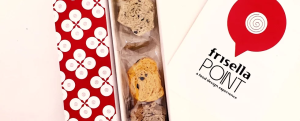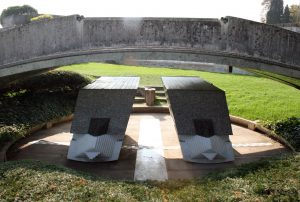My journey into the traditional culture of Southern Italy this time takes me to Puglia. We are exactly in Manfredonia. Here it is not the Befana, the good witch of the children’s Christmas fantasy, who fills the sock, but the dear departed ones pay homage to the children of Puglia. It is not Halloween in these districts to be celebrated but the feast of the dead has been practiced for centuries, aligning with the Southern cult of paying homage to their dead and remembering them with a veil of sympathy. One of the greatest southern anthropologists, Giuseppe Pitré, tells the legend that the dead stole from wealthy pastry chefs, fruit sellers, merchants to leave gifts for their loved ones in life. Hence the tradition of some countries of the “treasure hunt”, or “apparrai i scarpi”, for children, in my country better known as “l’anèma dè li mortè”. The symbol chosen is the sock made of wool and by hand, strictly empty, which will be filled by the souls of the dead with local delicacies. The purpose is purely educational, being the cult of the dead in our lands very rooted; children are taught to have a different relationship with death. On the night between 1 and 2 November, Apulian children, following parental recommendations, hang the so-called “Cavezètte de l’anime i murte” from their bed. The deceased loved ones thus fill it with oranges, lotuses, quinces, dried figs, rowanberries and medlars, as well as walnuts and almonds. Today, however, with globalization, things have changed but the precepts have not! The products of mother nature have turned into sweet candies and chocolates and for the richest toys. However, this wonderful tradition is handed down from father to son, sometimes seasoned with a pinch of “wickedness” by adding pieces of coal for some naughty children, to make them understand that the dead had wanted to punish them for their wickedness. Mothers, before this fateful night, love to repeat to their children a sort of dirge that seems like a recommendation: “Se fe u cattive i murte te mettene i carevùne ‘nda cavezette” (if you play bad the dead will put the coals in the sock). In short, this charcoal of Christmas memory also recurs in this solemn feast for the dead as a symbol of punishment. Hoping that the following year, mindful of this punishment, the children will be better. It is the day of the commemoration of the dead, the long-awaited day. The socks are opened to discover their contents, the boys wander around the houses of relatives and acquaintances with the long worn sock dangling over their shoulders, hoping to fill it with gifts to the cry of “L’Anime i Murte”, “A cavezette de l’Anime i Murte”. elderly, who remember the days of their childhood, remind the children that the sock represents abundance and that if they are good the souls of the dead the following year will be more generous.
Puglia and the souls of the dead

Intesa vincente. A Lecce la frisella incontra il design con Frisella Point Valorizzare il cibo della tradizione attraverso l’unione delle eccellenze del territorio e del linguaggio contemporaneo dell’estetica a tavola.
A pochi passi dalla Basilica di Santa Croce e da Porta Napoli, la frisella, regina della convivialità delle tavole estive salentine, ha trovato il proprio regno. Frisella Point è un intimo spazio interno, con dehors su piazzetta Santissima Addolorata 14, che si propone al pubblico come “ristorazione culturale”, per valorizzare un prodotto semplice della tradizione […]
Continua a leggere
Il labirinto di Porsenna
*di Bianca Sestini* Oltre al suo magnifico lago, gli Etruschi sono il motivo principale della fama di Chiusi dentro e fuori dalla Toscana. Stando a fonti latine, sarebbe stato uno dei primi insediamenti di questa antica civiltà. Per alcuni la città fu fondata da Telemaco, il figlio di Ulisse, per altri dall’eroe Cluso. Da allora, […]
Continua a leggere
L’inno all’amore della Tomba Brion
*di Carlo Piano* La Tomba Brion è la storia di un amore scritta con acqua, aria e cemento armato. Quando Onorina Tomasin chiese a Carlo Scarpa di creare il mausoleo per ricordare il marito Giuseppe Brion, improvvisamente scomparso, lui accettò a una condizione: doveva avere la parola della vedova che non si sarebbe mai risposata. […]
Continua a leggere









